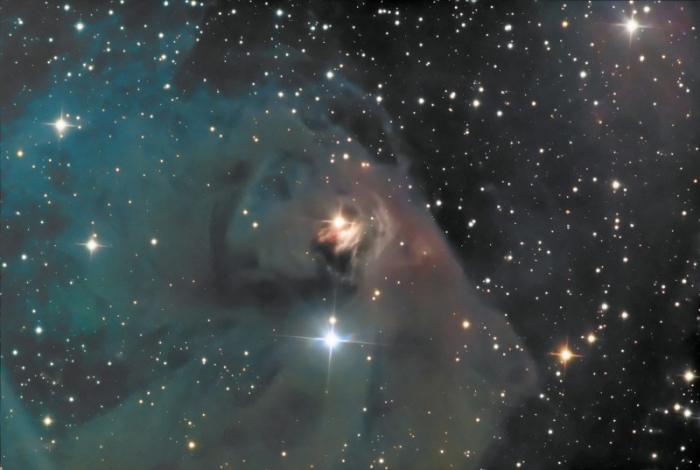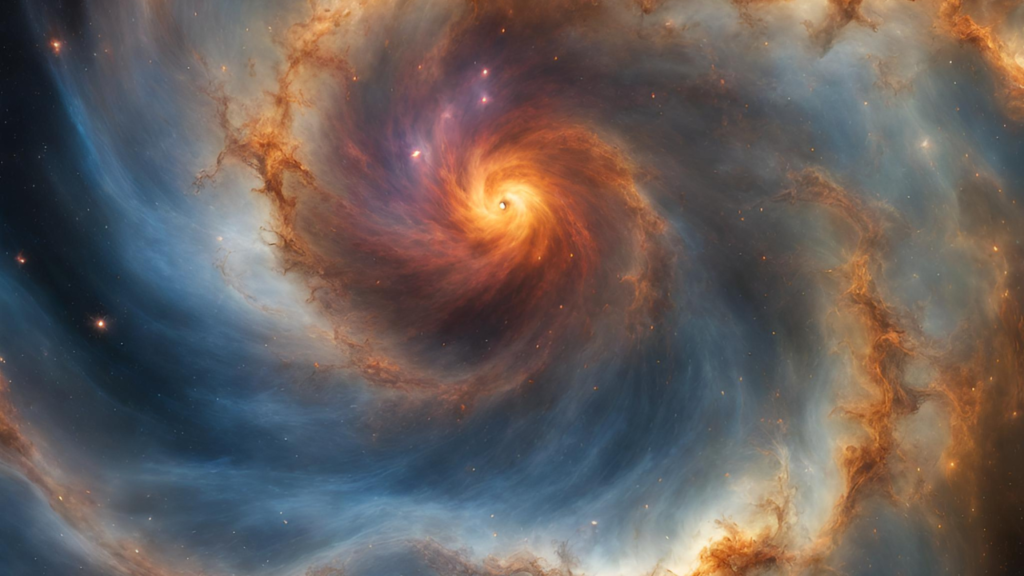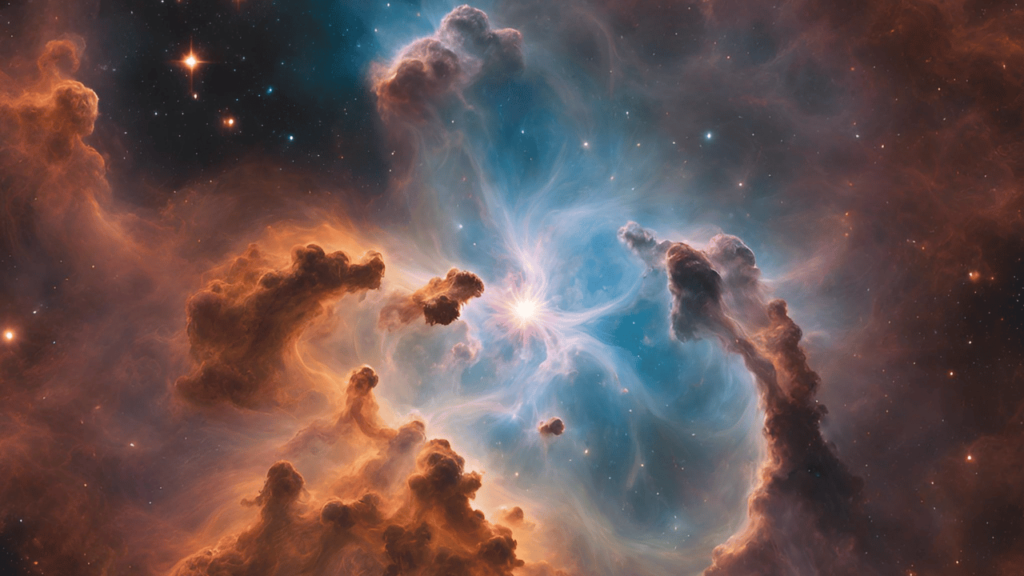Element formation
The stars are the dominant entities in the vast cosmos, their enormous furnaces creating the very elements that comprise our planet. The breathtaking process of nucleosynthesis is propelled by the unrelenting dance of charged particles, which are the fundamental constituents of matter.

Exposing the Universe Ballet:
Imagine protons, neutrons, and electrons dancing around on a cosmic dance floor, their interactions igniting the flames of nuclear fusion. The fundamental building blocks of our universe, new elements, are being born as a result of these collisions, which are happening at unfathomable speeds and energies.
Table of Contents
Comprehending Charged Particle Language:
The electromagnetic force, which permeates the universe and shapes charged particles like protons with their positive charge and electrons with their negative charge, is in charge of these charged particles. This force controls all of their interactions, including those of attraction and repulsion, and it is essential to the complex dance of element formation.

The Stars’ Nuclear Forge:
A magnificent display is about to take place amid the blazing depths of space. The intense heat and pressure that protons, the positively charged particles at the centre of atomic nuclei, endure drive them towards fusion(Mysteries of Element Formation).
A sudden burst of energy is released when two protons collide because they are able to overcome the electromagnetic repulsion that normally keeps them apart and merge into a helium nucleus. Stellar nucleosynthesis is based on this fusion process.
The Neutron Shuffle:
In atomic nuclei, neutrons are the chargeless companions of protons and are essential to the creation of heavier elements. Neutrons are absorbed by heavier nuclei during nuclear fusion, increasing their mass and opening the door to the synthesis of new elements.

Creating a Cosmic Symphony Simulation:
Comprehending the complex dance of charged particles inside stars is a difficult undertaking that calls for the capability of highly developed computer simulations. By utilising the computational power of contemporary computers, these simulations imitate the conditions found inside stars, giving physicists the ability to examine element formation in great detail(Mysteries of Element Formation).
The Influence of Accuracy:
A thorough comprehension of the interactions between charged particles is essential for accurately simulating the formation of elements. The forces controlling these particles, the likelihood of their collisions, and the results of these collisions are all carefully studied by physicists.
Verifying the Cosmological Model
Physicists use experimental data from star observations, laboratory experiments, and research on meteorites—remaining pieces of our solar system—to verify the accuracy of their simulations.
Scientists can improve their understanding of element formation and make more accurate predictions about the universe’s elemental abundance by comparing their simulations with experimental data.
Mysteries of Element Formation

The process by which the fundamental components of matter, such as hydrogen and helium, combine to form heavier elements is known as element formation, and it is an intricate and fascinating phenomenon that has fascinated scientists for centuries. This is a tale of extreme heat, tremendous energy, and the interaction of elementary particles within the blazing cores of stars.
Nuclear fusion, the process by which two or more atomic nuclei combine to form a heavier nucleus, is fundamental to the formation of elements. The stars that illuminate the universe are powered by the massive amounts of energy released during this fusion process. But there are obstacles in the way of element formation. The extreme heat and pressure found only in a star’s core are necessary to overcome the electrostatic repulsion between positively charged nuclei.
Hydrogen, the most common element in the universe, goes through a complex series of fusion reactions inside the stellar crucible. Four hydrogen nuclei combine to form a helium nucleus in the proton-proton chain reaction, the most basic and frequent type of reaction. Photons, the light particles that make up our sun’s rays, are released as a result of this multi-step process.
Heavier elements start to come out of the nuclear furnace as stars evolve and their cores heat up. For example, the triple-alpha process produces carbon, an element that is essential to life. This fundamental component of organic molecules is created when three helium nuclei collide with one another.
Stars experience dramatic changes as they get older, with their outer layers expanding and their cores collapsing. Gold, nickel, and iron are among the even heavier elements that can form as a result of these processes. A supernova explosion, a potent event that scatters the newly formed elements into the interstellar medium, can be set off by the strong gravitational forces and extremely high temperatures present in these collapsing stellar remnants.
These expelled materials serve as the building blocks for new stars and planets because they are enhanced by the stellar alchemy occurring inside the star. These components have combined over billions of years to form the vast variety of materials that comprise our universe, ranging from the far-off stars that shine in the night sky to the rocky planets in our solar system.
As scientists learn more about the nuclear reactions that power stars and the cosmic processes that shape the universe, they are further captivated by the mysteries surrounding the formation of elements. Solving these puzzles might provide fresh perspectives on the genesis of the elements, the development of stars, and the fundamental properties of matter.
Future research on element formation is anticipated to concentrate on a number of important areas:
Recognizing neutrinos’ function in the formation of elements: The mysterious particles known as neutrinos are created during nuclear fusion reactions in stars. Despite being extremely hard to find, they are essential for energy transport and stellar nucleosynthesis regulation. Upcoming research attempts to advance our knowledge of the neutrino flux and how it affects element formation.
Examining the creation of superheavy elements: Supernova explosions create the heaviest elements in the universe, including uranium, platinum, and gold. Subsequent research endeavours will centre on comprehending the mechanisms that give rise to these elements and the variables that impact their quantity.
Investigating neutron stars’ role in the formation of elements: The extraordinarily dense leftovers of massive stars known as neutron stars are also believed to be important in the formation of elements. Subsequent research will look at the conditions inside neutron stars and whether or not they can produce new elements through unusual nuclear reactions.
Recognizing how stellar winds affect the dispersal of elements During their lifetimes, stars release a large amount of matter, which enriches the interstellar medium with newly formed elements. Subsequent research endeavors to more precisely measure the volume of material released by stars and its influence on the development of successive generations of stars and planets.
Simulating the formation and evolution of the universe’s chemical composition: Researchers are creating complex models to represent the universe’s chemical composition’s formation and evolution over time. These models will aid in our comprehension of the processes that have shaped the distribution of elements in space and the consequences for the emergence of life and habitable planets.
In summary:
The tiny builders of our universe, charged particles, plan the emergence of elements in the blazing cores of stars. Gaining insight into these particles and their interactions can lead to a deeper understanding of stellar alchemy and reveal the mysteries of the universe and our place in it.
The language of charged particles will continue to lead us as we explore the mysteries of the cosmos, providing light on the way to a deep comprehension of our cosmic origins and the forces that form our environment.


